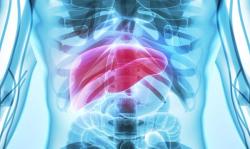
OR WAIT null SECS
XSB-001 Shows Equivalent Efficacy to Ranibizumab in nAMD Treatment
The analysis of the XPLORE trial suggested XSB-001 showed biosimilarity to reference ranibizumab as assessed by BCVA improvement at 8 weeks.
Recent phase 3 results suggest XSB-001, a ranibizumab biosimilar candidate, demonstrated biosimilarity to the reference product (Lucentis®)) in patients with neovascular age-related macular degeneration (nAMD).1
The analysis of the XPLORE trial suggested that the biosimilar candidate demonstrated equivalent efficacy, as assessed by improvement in best-corrected visual acuity (BCVA), at 8 weeks, with a generally safe and well-tolerated safety profile consistent with the reference product.
“There were no clinically meaningful differences between XBS-001 and reference ranibizumab in anatomical safety (treatment-emergent adverse events [TEAEs], intraocular pressure, intraocular inflammation), or immunogenicity endpoints through 52 weeks of treatment,” wrote the investigative team, led by Anat Loewenstein, MD, Tel Aviv Medical Center.
Vascular endothelial growth factor (VEGF) inhibitors serve as a mainstay treatment for nAMD and other retinal disorders, but their relatively high cost could create an economic burden for payers and limit treatment access. Due to repeated anti-VEGF injections being necessary to maintain their efficacy, access may be improved with better availability of less expensive biosimilar products.2
The randomized, double-masked, parallel-group XPLORE trial evaluated the efficacy, safety, pharmacokinetics, and immunogenicity of XSB-001 versus reference ranibizumab at clinical sites in 15 countries between April 2019 - November 2021. Eligible patients were ≥50 years of age with newly diagnosed, active, subfoveal choroidal neovascularization (CNV) lesion secondary to nAMD in the study eye. Study participants were randomized 1:1 to receive intravitreal injections of 0.5 mg XSB-001 or reference ranibizumab in the study eye once every 4 weeks for 52 weeks.
For the analysis, the primary endpoint was the change from baseline in BCVA measured by Early Treatment Diabetic Retinopathy Score [ETDRS] letters at week 8 for the study eye. The analysis concluded biosimilarity if the 2-sided 90% CI (United States) or 95% (global) for the difference in least-squares (LS) mean change in BCVA at week 8 was within the predefined equivalent margin of ± 3.5 ETDRS letters. The equivalence margin of ± 3.5 letters was determined using a meta-analysis of data from clinical trials of reference ranibizumab, previously identified minimal clinically important differences in visual acuity, and advice from regulatory authorities, according to investigators.
The study enrolled 582 patients who were randomized to receive XSB-001 (n = 292) or reference ranibizumab (n = 290). Patient characteristics were generally similar between study groups: the mean age was 74.1 years, most patients (85.2%) were White, and 55.8% were female. In addition, the mean BCVA scores at baseline were 61.7 and 61.5 ETDRS letters in the XSB-001 and reference ranibizumab groups, respectively.
Results showed both treatment groups experienced improvements in BCVA at Week 8. The least-squares mean change in BCVA from baseline at Week 8 was 4.6 ETDRS letters in the XSB-001 group and 6.4 letters in the reference ranibizumab group, demonstrating a least-squares mean treatment difference of -1.8 ETDRS letters (90% CI, -2.9 to -0.7; 95% CI, -3.1 to -0.5). The 90% and 95% CIs for the least-squares mean difference were within the predefined equivalence margin, according to investigators.
Additionally, at week 52, the least-squares mean change in BCVA was 6.4 and 7.8 ETDRS letters for XSB-001 and reference ranibizumab, respectively. The least-squares mean treatment difference was -1.5 ETDRS letters (90% CI, -3.3 to 0.4; 95% CI, -3.6 to 0.7). Results regarding secondary endpoints showed similar results between treatment groups for change from baseline in central foveal thickness (CFT), CNV leakage area, CNV size, and amount of subretinal fluid.
Treatment with XSB-001 for 52 weeks was considered safe, with a comparable incidence of treatment-emergent adverse events (TEAEs) between XSB-001 and reference ranibizumab (67.5% vs. 70.6%). The incidence of ocular TEAEs in the study eye was additionally comparable for both treatment groups, with most ocular TEAEs mild in intensity and considered unrelated to the study treatment.
Loewenstein and colleagues noted XSB-001 was recently approved by the European Medicines Agency (EMA) in November 2022 and an application for marketing approval in the US will be submitted to the US Food and Drug Administration (FDA).
“The approval of additional ranibizumab biosimilars, as well as biosimilars for aflibercept and a formulation of bevacizumab for ocular use, will provide clinicians with effective treatment options for nAMD that may be more cost-effective,” they wrote.
References
- Loewenstein A., Czumbel N., Ernest J., Dusová J., Pearlman J. & Nowosielska A., Randomized Trial of Biosimilar XSB-001 Versus Reference Ranibizumab in Patients With Neovascular Age-Related Macular Degeneration, Ophthalmology Retina (2023), doi: https:// doi.org/10.1016/j.oret.2023.05.005.
- Hariprasad SM, Gale RP, Weng CY, et al. An introduction to biosimilars for the treatment of retinal diseases: a narrative review. Ophthalmol Ther. 2022;11:959-982.
Related Content:


